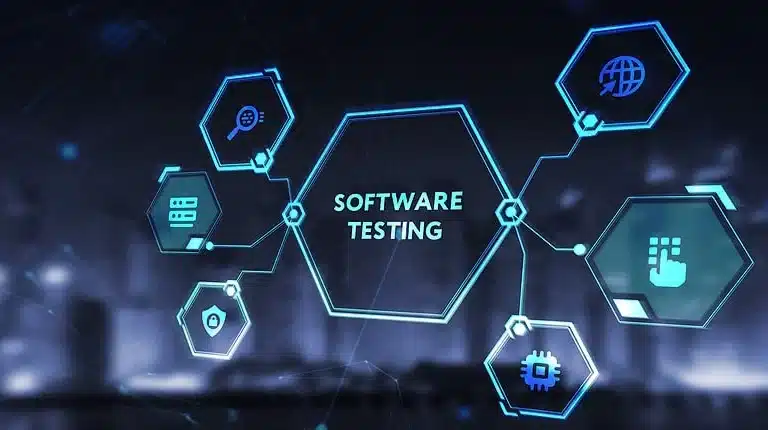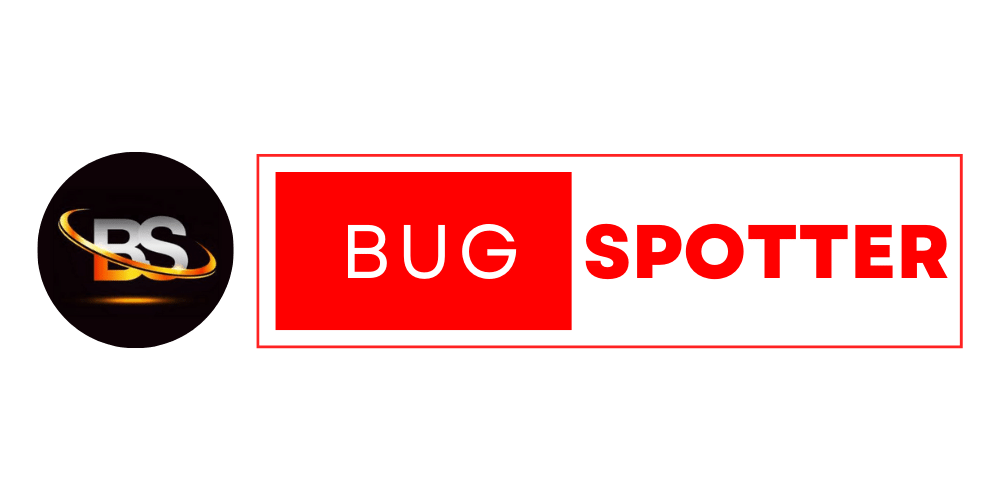Software Testing Interview Questions for Cisco
Table of Contents


Steps of an Interview Round
The interview process typically begins with an introduction, where the interviewer and candidate establish rapport. Next, the HR round focuses on assessing the candidate’s background, motivations, and fit within the company culture through behavioral questions. This is followed by the technical round, where the candidate’s knowledge and skills in software testing are evaluated through specific questions about methodologies, tools, and processes. Finally, the situational or behavioral round delves into real-life scenarios, allowing the candidate to demonstrate problem-solving abilities and teamwork skills. Throughout the interview, the interviewer observes not only the candidate’s answers but also their communication style and confidence, ultimately leading to a holistic assessment of their suitability for the role.
Round 1 : HR Round
1. Tell me about yourself and your background in software testing.
– “I have a degree in computer science and over three years of experience in software testing. I started my career in manual testing, where I developed a strong understanding of the testing lifecycle and quality assurance principles. I later transitioned to automated testing, using tools like Selenium, which helped me enhance my skills and contribute to more efficient testing processes.”
2. Why did you choose a career in software testing?
– “I chose software testing because I am passionate about ensuring that users have the best possible experience with software. I enjoy problem-solving and the challenge of finding and fixing bugs, which directly contributes to product quality and user satisfaction.”
3. What do you know about our company and the products we offer?
– “I know that your company specializes in [specific product or service], focusing on [unique features or benefits]. I admire your commitment to innovation and quality, particularly in [mention any recent projects or initiatives you found interesting].”
4. How do you handle tight deadlines and high-pressure situations?
– “I manage tight deadlines by prioritizing tasks based on their urgency and impact. I break down projects into smaller, manageable parts and maintain clear communication with my team to ensure everyone is aligned. This approach helps me stay focused and productive, even under pressure.”
5. Can you describe a time you worked in a team and faced challenges? How did you resolve them?
– “In one project, we faced conflicting priorities that affected our timeline. I organized a meeting to discuss our challenges openly, allowing each team member to share their concerns. We collectively adjusted our priorities and responsibilities, which helped us get back on track and meet our deadlines.”
6. What motivates you in your work, particularly in testing?
– “I am motivated by the impact my work has on product quality and user satisfaction. Knowing that I play a key role in delivering a reliable product drives me to continuously improve my skills and testing processes.”
7. Where do you see yourself in five years?
– “In five years, I see myself in a senior testing role, possibly leading a testing team. I hope to deepen my expertise in automation and explore areas like performance or security testing, contributing to more robust software development practices.”
8. How do you stay current with trends in software testing?
– “I stay current by reading industry blogs, participating in webinars, and attending conferences. I also follow influential figures in the testing community on social media, which helps me keep up with new tools and methodologies.”
9. Describe your ideal work environment.
– “My ideal work environment is collaborative, where team members communicate openly and share knowledge. I thrive in settings that foster creativity and innovation, allowing for continuous learning and professional growth.”
10. How do you handle constructive criticism?
– “I view constructive criticism as an opportunity for growth. I listen carefully, reflect on the feedback, and implement changes to improve my performance. I appreciate when others take the time to provide helpful insights.”
Feel free to modify any of these answers to better match your personal experiences and style!
Round 2 : Technical Round Answers
1.What are the key differences between manual testing and automated testing?
Manual testing involves human testers executing test cases without any automation tools, making it suitable for exploratory and usability testing. It allows for human intuition and adaptability. In contrast, automated testing uses scripts and tools to execute tests, which is efficient for repetitive tasks and regression tests. Automated testing enhances speed and consistency but requires upfront investment in tools and maintenance.
2.Can you explain the software development life cycle (SDLC) and how testing fits in?
The SDLC is a structured process for software development, comprising stages like planning, analysis, design, implementation, testing, deployment, and maintenance. Testing fits into this framework as a critical phase that validates the software against requirements. It occurs iteratively throughout the lifecycle, ensuring that defects are identified and addressed before moving on to the next stage.
3.What types of testing have you performed?
I have performed various types of testing, including functional testing, regression testing, integration testing, system testing, acceptance testing, and performance testing. Each type serves a specific purpose in ensuring the software meets quality standards.
4.Describe the differences between black-box testing and white-box testing.
Black-box testing assesses the functionality of an application without knowledge of its internal workings, focusing on input-output relationships. It’s used for functional testing. White-box testing examines the internal logic and structure of the code, requiring knowledge of the implementation. This is useful for unit testing and code coverage assessments.
5.What is regression testing, and why is it essential?
Regression testing checks existing functionality after changes to the codebase, such as bug fixes or new features, to ensure that these changes haven’t negatively impacted existing functionality. It is essential for maintaining software quality over time and preventing the introduction of new defects.
6.How do you write a test case? What components should it include?
A well-structured test case should include the following components:
- Test Case ID: A unique identifier.
- Description: A brief overview of what the test case verifies.
- Preconditions: Any necessary setup.
- Test Steps: A detailed, step-by-step guide for execution.
- Expected Results: What should occur after executing the test steps.
- Actual Results: The outcome upon execution.
- Status: Whether the test passed or failed.
7.What is exploratory testing, and when would you use it?
Exploratory testing is an informal testing approach where testers actively explore the application without predefined test cases. It’s especially useful when requirements are unclear, allowing testers to use their creativity and experience to uncover issues and understand the user experience better.
8.Explain boundary value analysis and equivalence partitioning with examples.
Boundary Value Analysis (BVA) involves testing at the boundaries of input ranges. For example, if an input field accepts values from 1 to 100, relevant boundary values would include 0, 1, 100, and 101. Equivalence Partitioning divides input data into valid and invalid groups; for instance, valid values for the same input field would be any number from 1 to 100, while invalid values could be anything less than 1 or greater than 100.
9.Which test management tools have you used, and what features did you find most useful?
I have used tools like JIRA and TestRail. JIRA is effective for bug tracking and project management, providing seamless integration with issue tracking. TestRail offers robust reporting and test case management features, which are essential for tracking test progress and providing insights into the testing process.
10.What is your experience with test automation tools like Selenium or JUnit?
I have extensive experience with Selenium for automating web applications, where I’ve written scripts in [Java/Python] to automate functional and regression testing. With JUnit, I have conducted unit testing for Java applications, ensuring that each component functions correctly and adheres to design specifications.
11.How do you handle test data management in automated tests?
I manage test data by creating dedicated test databases and utilizing data generation tools to create realistic datasets. I also implement data masking techniques for sensitive information and ensure that test data is reset or cleaned between runs to maintain consistency and reliability.
12.Can you describe the defect life cycle and its key stages?
The defect life cycle includes several key stages:
- New: The defect is logged and documented.
- Assigned: It is assigned to a developer for fixing.
- Open: The developer starts working on the defect.
- Fixed: The defect has been addressed and fixed.
- Retested: The tester verifies that the fix works correctly.
- Closed: The defect is confirmed as resolved and is closed.
- Reopened: If the defect persists, it can be reopened for further investigation.
13.How do you prioritize test cases?
I prioritize test cases based on risk, business impact, frequency of use, and complexity. High-risk areas that could significantly affect users or critical functionalities are prioritized to ensure they are tested thoroughly.
14.What are the differences in testing approaches between Agile and traditional waterfall methodologies?
Agile emphasizes iterative development, with testing integrated throughout the process. Testers collaborate closely with developers, allowing for rapid feedback and adaptation. In contrast, traditional waterfall methodologies follow a linear approach, where testing occurs only after development is complete, which can delay feedback and increase risks if issues are discovered late.
15.What is continuous testing, and why is it important in a DevOps environment?
Continuous testing involves executing automated tests throughout the software development lifecycle, providing immediate feedback on code changes. It is crucial in a DevOps environment because it ensures that new features do not compromise existing functionality, accelerates release cycles, and maintains high-quality standards across the development process.
Round 3 : Situational/Behavioral Round
1.Describe a situation where you discovered a critical bug close to a release. What actions did you take?
In a previous project, I discovered a critical bug in the payment processing feature just days before release. I immediately documented the bug with detailed steps to reproduce it and communicated the issue to the development team. We held a quick meeting to assess the impact and prioritized fixing it. I worked closely with developers to verify the fix and conducted thorough regression testing to ensure no other areas were affected.
2.Have you ever had to test a product with incomplete requirements? How did you manage?
Yes, I encountered this situation in a previous project. I proactively scheduled meetings with stakeholders to gather additional information and clarify requirements. In the meantime, I conducted exploratory testing on the existing features to identify potential gaps. This approach helped create a preliminary understanding of the application while allowing for ongoing communication with the team to refine requirements.
3.Can you give an example of how you improved an existing testing process?
In one project, I noticed that our regression testing was time-consuming and often led to delays. I proposed implementing automated regression tests using Selenium, which allowed us to run tests more quickly and consistently. After training the team on the automation tools, we reduced our regression testing time by over 50%, enabling us to release features faster without compromising quality.
4.What steps would you take if you found discrepancies between the expected and actual results during testing?
First, I would carefully review the test steps and data to ensure there were no errors on my part. If the discrepancy persists, I would document the issue with detailed information and steps to reproduce it. Next, I would communicate the findings to the development team for further investigation and work collaboratively to identify the root cause and determine the necessary actions to resolve it.
5.How do you approach testing when there’s a lack of documentation?
In cases of insufficient documentation, I rely on exploratory testing to navigate the application. I interact with the software to identify its functionality and user interface. Additionally, I communicate with developers and stakeholders to gather insights and clarify expectations, which can guide my testing approach.
6.Describe a time when you disagreed with a developer about a defect. How did you resolve it?
I once disagreed with a developer regarding the severity of a defect related to a user interface issue. I provided examples of how the defect could impact user experience and supported my arguments with user feedback. We engaged in an open discussion, and eventually, the developer agreed to prioritize the fix based on the potential impact. This experience reinforced the importance of clear communication and collaboration.
7.What strategies do you use to manage conflicts within a testing team?
I believe in fostering open communication and encouraging team members to express their perspectives. When conflicts arise, I facilitate discussions to understand different viewpoints and find common ground. I also focus on team goals, ensuring that everyone understands the project’s objectives, which helps to realign priorities and resolve conflicts amicably.
8.Can you share an example of a time when you had to learn a new tool or technology quickly?
When my team decided to implement a new test automation tool, I was tasked with leading the effort. I dedicated time to self-study through online courses and documentation while also seeking advice from colleagues with experience in the tool. I set up a pilot project to practice and refine my skills. Within a few weeks, I was able to train the rest of the team and implement the tool effectively.
9.How do you ensure effective communication with stakeholders regarding testing progress and issues?
I maintain regular communication with stakeholders through status updates, meetings, and progress reports. I use tools like JIRA to provide visibility into the testing process, which allows stakeholders to track progress and raise concerns. I also encourage feedback to ensure everyone is aligned and that any issues are addressed promptly.

